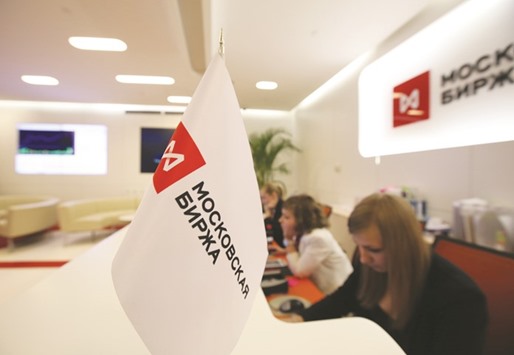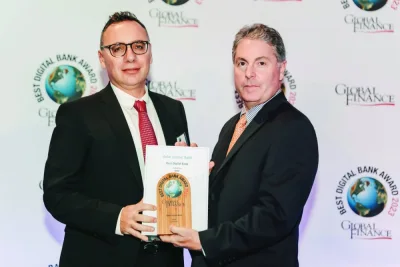The world’s most generous dividends are going a-begging as the strongest quarterly rally since 2012 in emerging markets leaves Russian stocks behind.
Investors are ignoring an estimated payout of 5.3% in the next 12 months as they dump Moscow-listed shares on concern the US won’t ease sanctions on Russia as quickly as previously expected. The dividend yield is the highest among markets with at least $100bn in capitalisation and is even higher than sovereign-bond yields. But Russia still can’t attract inflows.
As the performance gap widens between Russia and the rest of emerging markets, the case for buying Moscow shares is getting stronger. Some investors are turning cautious on the rally from India to South Africa and Mexico, as valuations become expensive and volatility tightens to levels that preceded market declines in the past. If those markets stall, a portfolio with higher dividend yields - such as Russia - may outperform.
“In other markets, such a yield costs double in stock valuations,” said Ekaterina Iliouchenko, a money manager at Union Investment in Frankfurt, who oversees about $215mn in eastern European assets. “While the Trump rally is over, unless oil collapses, strong crude and good corporate financial results should bring investors back to the Russian market.”
The benchmark Micex index has dropped 8.6% this quarter, compared with a gain of 13% for the MSCI Emerging Markets Index. That’s made Russia look cheap. Micex stocks offer the highest dividends relative to their peers since 2008. Earnings estimates on the dollar-denominated benchmark, the RTS Index, have increased three times as fast as the MSCI gauge in the past 12 months.
The biggest Russian equity exchange-traded fund, VanEck Vectors Russia, had an inflow of $17.5mn on Friday, the largest since January 30. The Micex gained 0.2% in Moscow yesterday. While Micex valuation measures are tempting, investors remain concerned about the two other factors that typically define their interest in Russian assets. They are watching the oil-price outlook and the contours of the US-Russian relationship.
Here are some more investor views on the attractiveness of Russian dividend yields: Elena Loven, who helps manage more than €1bn ($1.1bn) in Russian stocks at Swedbank Robur in Stockholm: “The high dividend yield is an argument in Russia’s favour. However, the dividend yield alone isn’t enough for the Russian market rally to resume. It needs a different trigger. I think the Russian market can go lower from current levels. Right now, the stock market isn’t so cheap anymore.
“Many investors are turning negative on oil’s prospects, the optimism that sanctions will be eased quickly has soured. People are taking profits and don’t have high hopes for the market. It doesn’t make sense to buy Russian stocks just for the sake of dividends.”
Sergey Vakhrameev, a money manager at GL Financial in Zurich, which oversees about $100mn in assets: “The Russian stock market has an attractive dividend yield. However, it’s a premium for risk and volatility. It’s a bad idea to count just on the dividends, because if the stock falls 10% to 15% in one week, a high dividend yield won’t compensate for it.
“If the sanctions are lifted, the shares will rise and the dividend yield will drop to 4%. Despite Russia’s high dividend yield, one can lose a lot and very quickly on the market’s decline.”
Mattias Westman, the London-based founder of Prosperity Capital Management, which oversees about $3.4bn in assets from Russia and former Soviet republics: “The high dividend yield is very attractive. It shows that Russian companies are highly cash-flow generative and that capex discipline is much better than some years ago.
“The market is driven by many things, including geopolitical speculation and commodity prices. But over time, only cash flow determines the value of companies and these dividends are very helpful. In addition, Russia investors will receive large dividend flows and much of this will probably be reinvested.”

Employees work in the reception area at the Micex-RTS Moscow Exchange. The benchmark Micex index has dropped 8.6% this quarter, compared with a gain of 13% for the MSCI Emerging Markets Index.

